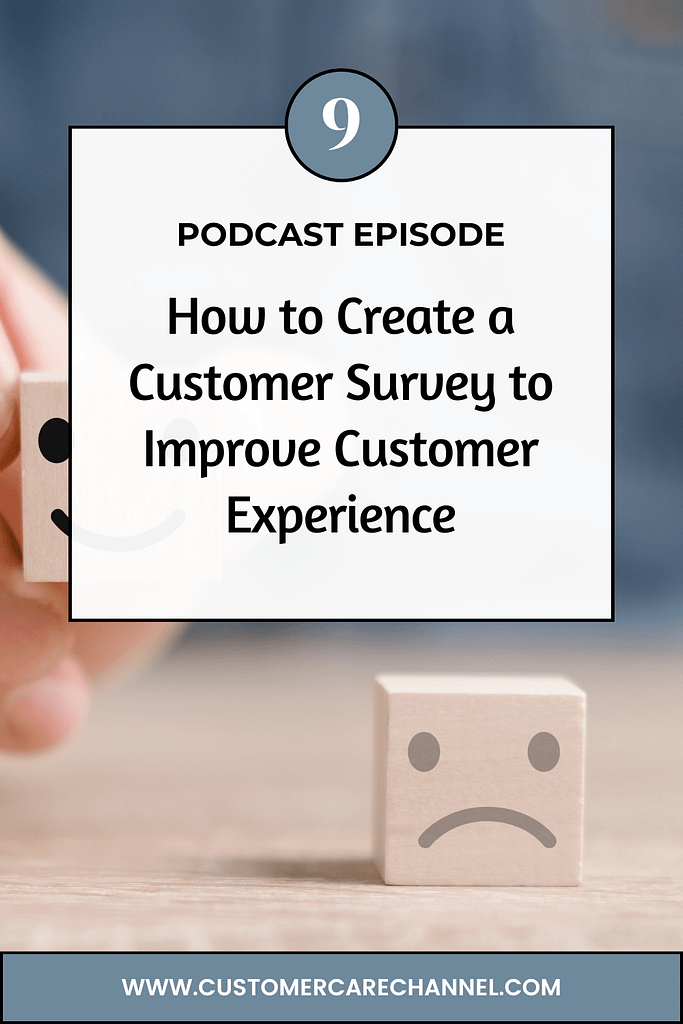This site contains affiliate links, view the disclosure for more information.
LISTEN OR SUBSCRIBE FOR FREE IN YOUR FAVOURITE PODCAST APP: Apple Podcasts – Spotify – RSS
This podcast episode is all about How to Create a Customer Survey to Improve Customer Experience.

Mastering Customer Feedback: Essential Strategies for Business Growth
Why Customer Feedback Is the Key to Business Success
Customer feedback is an essential tool for any business striving for growth. It provides actionable insights that help improve customer satisfaction, streamline processes, and strengthen customer relationships. Without this critical input, businesses risk stagnation and losing their competitive edge. Take the opportunity infront of you!
Benefits of Gathering Customer Feedback
Some businesses don’t bother to gather customer feedback which is a massive opportunity missed and others gather customer feedback and then don’t do anything with it! What a waste!
- Builds Stronger Relationships: Engaging customers for their input shows you value their opinions, fostering loyalty and trust. Show your customers that you care.
- Drives Improvement: Feedback highlights areas of improvement, both in customer experience and internal processes. Things may come to light which you weren’t even aware was happening.
- Prevents Customer Churn: Addressing negative feedback promptly can stop dissatisfied customers from leaving.
- Promotes Positive Reputation: Actively seeking feedback often results in higher customer satisfaction and glowing reviews. This is because you are actively keeping your customers happy and reacting to their comments.
Methods for Collecting Customer Feedback
1. Surveys
Surveys are a versatile tool to collect detailed insights. Use platforms like Google Surveys or SurveyMonkey (not sponsored) to create focused questionnaires. Key tips for success:
- Keep surveys short (under five minutes).
- Include open-ended questions for detailed suggestions.
- Share survey links via email, social media, or order confirmations.
2. Focus Groups
Organize focus groups with a mix of customers at various stages of engagement. (Meaning when customers are at different stages within your business) Offer refreshments in exchange for their honest feedback. Ensure discussions flow naturally while recording key points for later analysis. (And don’t butt in! You never know what feedback will come up)
3. One-on-One Meetings
Personal meetings with customers provide deeper insights. Whether over coffee or a casual chat, these conversations can uncover valuable suggestions and establish stronger connections. This can be alot more personal.
4. Email Campaigns
Send personalized or mass emails requesting feedback. Provide a clear deadline to encourage timely responses, and highlight how their input will improve their experience. And don’t forget how thankful you will be for their comments and time.
5. Phone Calls
For a more personal touch, call customers to gather feedback. Record the calls (with permission) to ensure you capture all the details accurately.
Acting on Customer Feedback
Once you’ve collected feedback, the real work begins:
- Analyze and Prioritize: Review responses to identify common themes and urgent issues.
- Implement Changes: Focus on actionable improvements that enhance customer satisfaction.
- Measure Results: Compare satisfaction rates before and after implementing changes to gauge effectiveness.
- Communicate Changes: Let customers know how their feedback has been used to improve their experience.
Pro Tip: Make Feedback Collection a Habit
Consider setting a regular schedule for collecting feedback—quarterly or annually—depending on your business needs. Customers are more likely to engage if they see consistent follow-through.
Final Thoughts
Collecting and acting on customer feedback isn’t just a one-time effort; it’s an ongoing process that drives growth and customer satisfaction. By listening to your customers, you can create a more robust, customer-focused business.
Follow me on Instagram for more tips, and don’t forget to leave a review or share this blog with your network if you found it helpful!
Resources Mentioned
Thank You for Listening!
To start managing your customer experience, the first step is to understand your customers. Who are they? What do they want? This is where creating a *customer avatar* can be incredibly useful. A customer avatar helps you picture your ideal customer, so you can make decisions that suit their needs and preferences. To help you get started, I’ve put together a free customer avatar template. Just subscribe to my email list, and you’ll get access to it straight away from your inbox.
More Tips for Learning About Customer Experiences
- 3 Reasons Why Customer Experience is So Important
- Why Good Customer Service Makes You Stand Out
- 5 Mistakes You Make With Frustrated Customers!

